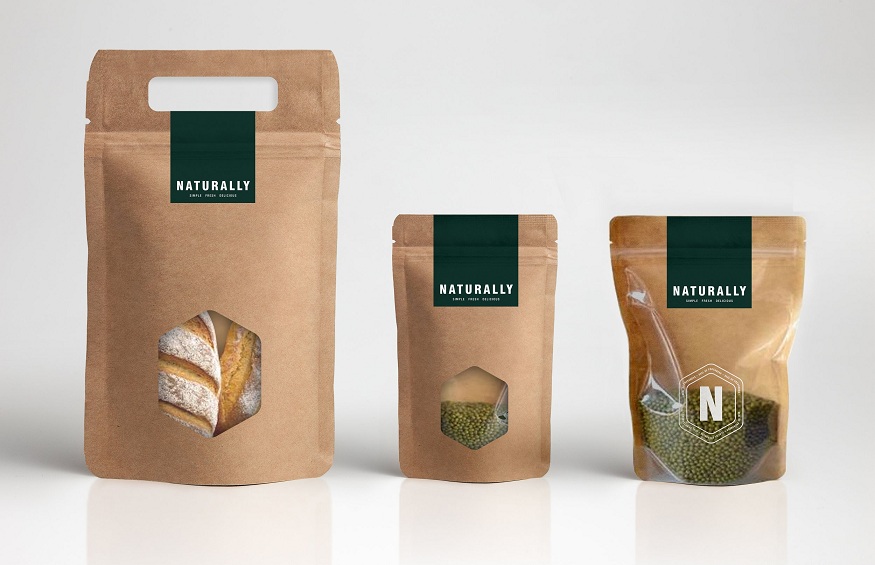Choosing the Right Packaging and Labeling Solutions for Your Food and Cosmetic Products
5 min read
The packaging is a product’s first impression. It must entice customers at a glance and inform them of the product’s qualities. For food and cosmetic brands, the packaging design is especially crucial. It introduces customers to the brand while protecting contents and adhering to regulations. The packaging and labeling of food products is important to inform customers about ingredients, nutritional information, and expiry dates.
With the variety of packaging options in the UAE market, selecting the perfect design is challenging. Brands must consider their audience, values, budget and distribution to make the right choice. The packaging must represent the brand’s identity and vision for the product.
It also needs to efficiently convey key details to customers on the go.
1. Product Type and Contents
The journey begins with understanding the traveler – whether it be food, beauty, or wellness. We must know the traveler’s nature and what provisions they carry. The vessel chosen must suit both passengers and parcels. Liquids demand leak proof boats lest they spill their secrets. Volatile goods require sturdy shields to protect their power. Nourishment needs breathable barriers to lengthen its life. The material of the vessel must accept, not react to, its companion contents. This ensures the safety, strength and magic of the traveler reaches its destination as intended. Learning the passenger and provisions allows choosing a vessel to shelter and guide them on their journey as the law demands.
2. Target Audience
Knowing the target audience helps decide the right packaging design, size, and labeling. For example, the packaging of products targeted towards kids may have bright, colorful designs while those aimed at professionals may have sophisticated, minimalist designs. Single-serve sachets or small jars work well for trial sizes targeting new users. On the other hand, larger bottles or jars are suitable for regular users. The language, text size, and information on labels also need to be tailored according to the audience – whether it is for urban or rural markets. Pictorial or multilingual instructions become important when targeting a wider audience.
3. Regulatory Compliance
All food and cosmetic products sold in the UAE must comply with labeling regulations set by ESMA and other relevant authorities. Labels must provide accurate information about ingredients, nutrition facts, expiry dates, storage instructions, and manufacturer/importer details in both Arabic and English. Packaging must not be misleading or make prohibited health claims. Businesses need to work closely with packaging suppliers to ensure all regulatory requirements for materials, closure types, and labeling are met.
4. Budget
The budget for packaging, labeling, and custom food label-making is an important consideration in the finalization process. Costly options such as glass bottles, premium laminated pouches, or specialized printing and coating techniques are suitable for premium products but not affordable for mass or value brands. Inexpensive yet functional packaging like plastic bottles or pouches and basic paper labels work better for budget-friendly goods. Companies can also think of multiple formats targeting different price segments. Overall, packaging expenditure must be optimized relative to product pricing without compromising on usability and visual appeal. This ensures the right solution for the intended market segment.
5. Sustainability
Sustainable and eco-friendly packaging is becoming more important in the world. Materials like paper, glass, aluminum, and bioplastics have a lower environmental impact than plastic and are better for sustainability. Packaging should also be minimal, reusable, allow refills, optimize weight and volume, and include custom food label maker. The disposal method, like recycling, must be considered too. Brands promoting sustainability get a better public image. However, sustainable packaging may cost more. Therefore, companies must balance sustainability with their individual budgets and business goals to find the right option.
6. Distribution Channels
The distribution channels that products are sold through also impact packaging choices. Packages suitable for e-commerce require strong builds, tamper-proof seals, and address labels. Retail packs work well for large modern retailers but may be too bulky for general trade stores with space issues. Travel-friendly formats have increased in popularity. Adaptable multipacks allow the distribution of smaller stock-keeping units via different routes. Retail-ready secondary packaging proves helpful for store displays. Choosing the correct packaging type assists seamless inventory management and visibility across all planned sales channels.
7. Brand Positioning
The packaging is a silent representative of the brand. Its appearance and the message it communicates must align with the brand’s overall identity and image in the marketplace. Premium brands project an upscale image with elegant, high-quality packaging that has distinctive designs. Mass market brands focus more on performance and value rather than extra features. Niche direct-to-consumer brands utilize novel designs to create an emotional bond with customers. Packaging also aids in differentiating similar products on retail shelves. Uniformity across all customer touchpoints featuring the packaging strengthens brand recognition and loyalty in the long run.
8. Production Capabilities
The capabilities of packaging suppliers need careful evaluation. Production options include form-fill-seal, flow wrapping, sachet making, specialized printing, lamination, and coating. Automated lines are suitable for high volumes due to speed and accuracy. Semi-automatic or manual machines can handle low volumes and customized packs. Other factors to consider are in-house or outsourced production and minimum order quantities which affect total cost. Pilot runs allow the validating process before bulk orders. Reliable vendors with a history of quality and on-time deliveries provide greater assurance. Qualified suppliers with suitable capabilities for the product and volumes are ideal partners.
Conclusion
Choosing the right packaging and labeling for food, cosmetic product labels and cosmetic products requires evaluating several important factors. It is important to consider the target audience, product type, regulatory norms, budget, sustainability, distribution channels, and production capabilities. The packaging solution needs to suit the brand positioning as well. With so many elements to take into account, a careful evaluation of each aspect is necessary to arrive at the ideal packaging and labeling that complements the product perfectly. The right packaging enhances the overall consumer experience and journey with the brand. It helps build a strong brand identity and loyalty over time by creating the right first impression and meeting customer expectations.






